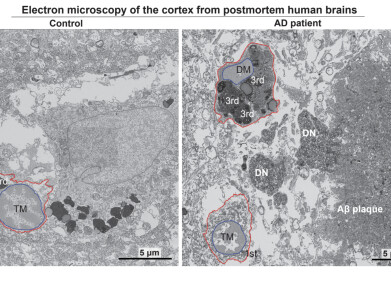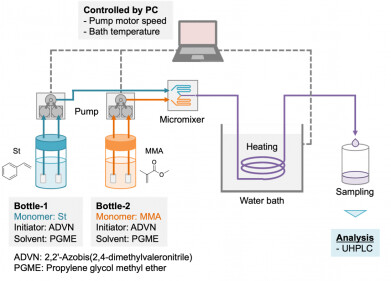-

-
.jpg) Gintautas Tamulaitis and Dalia Smalakytė (Credit: Jonas Tumasonis)
Gintautas Tamulaitis and Dalia Smalakytė (Credit: Jonas Tumasonis)
Research News
Scientists probe into functioning of CRISPR-Cas 10
Oct 03 2024
A group of researchers from the Institute of Biotechnology at the Life Sciences Centre of Vilnius University (Lithuania), studying the bacterial defence system of CRISPR-Cas10, have been able to reveal the structure of its “protein scissors" and mechanistic functioning details.
CRISPR-Cas defense systems found in bacteria differ in their composition and functions. Cas9 and Cas12, known as gene “scissors” for their ability to edit genomes and correct disease-causing mutations precisely, are amongst the most studied proteins today. The newly discovered mechanism of CRISPR-Cas10 system is also drawing interest as a potential molecular indicator of infection.
Under a virus attack the bacterium synthesizes cyclic oligoadenylates, a signalling system recognised by different effectors, or accessory proteins that act to enhance its defense systems.
“The discovery of cyclic oligoadenylates and the understanding of the mechanism of CRISPR-Cas10 have sparked great scientific interest and a breakthrough in signaling pathway research. Recently, a similar protection principle has been identified in other bacterial defense systems: CBASS, Pycsar, and Thoeris. In this study, we investigated the tripartite CalpL-CalpT-CalpS effector which is activated by CRISPR-Cas10 signaling molecules and we explained how this complex system works and how it is regulated,” explained research lead Dr Gintautas Tamulaitis.
The CalpL-CalpT-CalpS effector consists of three key proteins: CalpL, which acts as a signal-recognising “protein scissors”; CalpS, a protein that regulates gene expression; and CalpT, an inhibitor of the CalpS protein. The research team - Dalia Smalakyte, Audron Rukšenaite, Dr Giedrius Sasnauskas, Dr Giedre Tamulaitiene, and Dr Gintautas Tamulaitis -used a combination of biochemical, biophysical, bacterial survivability assays and cryogenic electron microscopy (cryo-EM) to study this system.
They found that when CalpL binds a molecule that signals a viral infection, it forms a polymeric filament of variable composition. The filament structure allows the CalpT-CalpS heterodimer to attach, positioning the active centre of the ‘scissors’ CalpL near the inhibitor CalpT and enabling to cleave it. Once CalpT is cleaved, CalpS is released from the heterodimer and can regulate gene expression to protect the bacterium from viral infection.
Co author Dalia Smalakyte, pointed out that the activity of the CRISPR-Cas “protein scissors” is tightly regulated in time by an internal timer mechanism that is activated upon the binding of signaling molecules and filament formation. This mechanism is unique compared to other similar signal-sensing effector proteins.
These CRISPR-Cas10 studies pave the way for the practical application of the regulated CRISPR-Cas ‘protein scissors’ as a molecular indicator of infection.
“Filament Formation Activates Protease and Ring Nuclease Activities of CRISPR Lon-SAVED” has been published in Molecular Cell.
More information online
Digital Edition
Lab Asia 31.6 Dec 2024
December 2024
Chromatography Articles - Sustainable chromatography: Embracing software for greener methods Mass Spectrometry & Spectroscopy Articles - Solving industry challenges for phosphorus containi...
View all digital editions
Events
Jan 22 2025 Tokyo, Japan
Jan 22 2025 Birmingham, UK
Jan 25 2025 San Diego, CA, USA
Jan 27 2025 Dubai, UAE
Jan 29 2025 Tokyo, Japan


















